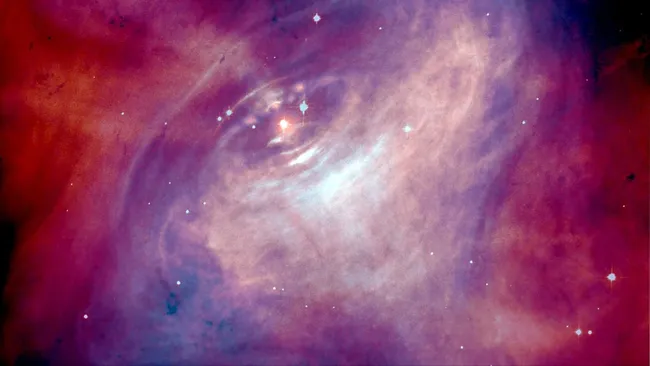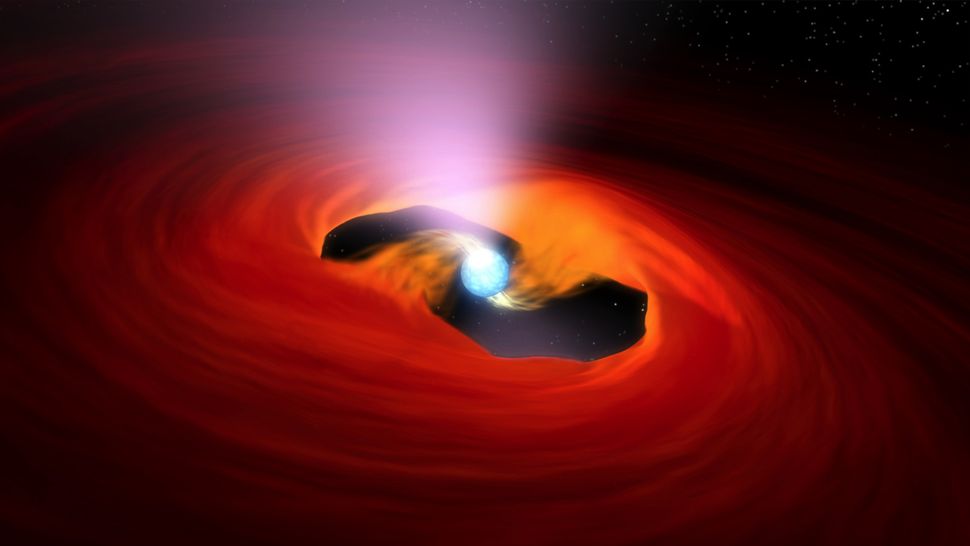Unusual High-Speed Star Propelling a Gas Cloud Named ‘Potaroo’ with Powerful Winds
A new star that spins rapidly and moves at incredible speeds through the universe has been found by astronomers. This star, known as a pulsar, spins 14 times every second and emits a powerful stream of particles, forming what is called a “pulsar wind nebula”. The discovery was made using Australia’s Square Kilometer Array Pathfinder (ASKAP) and the Parkes radio telescope, along with the South African MeerKAT radio telescope.
Located approximately 33,000 light-years away from Earth, the nebula, or gas cloud, appears to be 69 light-years wide when observed in radio waves. However, when viewed in X-rays, it is only a tenth of this size.

Despite its immense dimensions, which are 46 times larger than the solar system, the team responsible for the discovery has given the pulsar wind nebula the name “Potoroo”, inspired by a small marsupial native to Australia known for its hopping behavior.
Similar to all other neutron stars, the pulsar known as Potoroo, officially named PSR J1638–4713, came into existence when a massive star depleted its nuclear fusion fuel at its core. This depletion halted the outward release of energy that had counteracted the gravitational force pushing inward for millions or even billions of years.
Consequently, the core of the star, weighing between one and two times the mass of the sun, collapsed to a mere width of approximately 12 miles (20 kilometers). This resulted in the formation of matter so incredibly dense that a tablespoon of it would weigh around 1 billion tons on Earth. Simultaneously, the outer layers of the star were violently torn apart by an immense supernova explosion.

A swiftly rotating, immensely magnetic neutron star remains after this process, emitting radiation that intermittently traverses space akin to a celestial beacon, while being encompassed by an expanding shell of supernova debris that gradually cools.
The pulsar’s gusts propel charged particles, causing them to collide with the previously expelled material and giving rise to a pulsar wind nebula. As these particles distance themselves from the central neutron star, they gradually lose energy within this nebula.
By examining the emitted light from these pulsar wind nebulas, valuable insights can be gained regarding the movement of particles within the often turbulent surroundings of neutron stars.
The Potoroo discovery team has determined that the nebula bears a striking resemblance to a comet, featuring a dense central nucleus and a luminous trailing tail. This observation suggests that the pulsar is forging ahead of the pulsar wind nebula it energizes, propelling itself through the surrounding matter at an impressive velocity of approximately 2.2 million miles (3.5 million km) per hour. Consequently, the pulsar wind nebula takes on a bow-shock shape akin to the water’s form when a swiftly moving boat plows through it.
Referred to as PSR J1638–4713, this celestial object spins so rapidly that it completes an astounding 14 full rotations every second. Remarkably, it is believed to be exceptionally youthful in cosmic terms, with the discovery team estimating its age at a mere 24,000 years old. To put this into perspective, our solar system is approximately 4.5 billion years old.
The team’s research, although not yet peer-reviewed, has been made available on the arXiv paper repository site. Furthermore, it has been accepted for publication in the esteemed journal, Publications of the Astronomical Society of Australia.
This article is republished from space.com under a Creative Commons license. Read the original article.
Do not forget to share your opinion with us to provide you with the best posts !



0 Comments